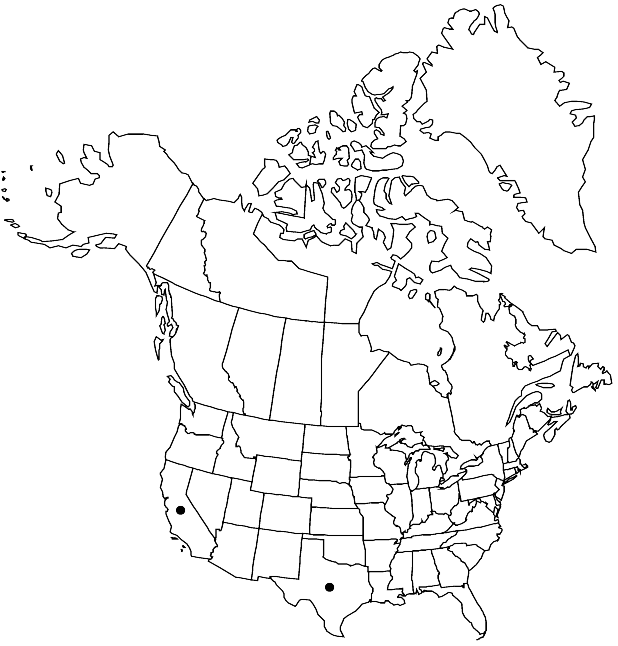Difference between revisions of "Matthiola incana"
in W. Aiton and W. T. Aiton, Hortus Kew. 4: 119. 1812.
FNA>Volume Importer |
imported>Volume Importer |
||
| (5 intermediate revisions by 2 users not shown) | |||
| Line 1: | Line 1: | ||
{{Treatment/ID | {{Treatment/ID | ||
|accepted_name=Matthiola incana | |accepted_name=Matthiola incana | ||
| − | |accepted_authority=(Linnaeus) | + | |accepted_authority=(Linnaeus) W. T. Aiton |
|publications={{Treatment/Publication | |publications={{Treatment/Publication | ||
|title=in W. Aiton and W. T. Aiton, Hortus Kew. | |title=in W. Aiton and W. T. Aiton, Hortus Kew. | ||
| Line 7: | Line 7: | ||
|year=1812 | |year=1812 | ||
}} | }} | ||
| − | |basionyms={{Treatment/ID/ | + | |special_status={{Treatment/ID/Special_status |
| + | |code=W | ||
| + | |label=Weedy | ||
| + | }}{{Treatment/ID/Special_status | ||
| + | |code=I | ||
| + | |label=Introduced | ||
| + | }} | ||
| + | |basionyms={{Treatment/ID/Basionym | ||
|name=Cheiranthus incanus | |name=Cheiranthus incanus | ||
|authority=Linnaeus | |authority=Linnaeus | ||
| + | |rank=species | ||
| + | |publication_title=Sp. Pl. | ||
| + | |publication_place=2: 662. 1753 | ||
}} | }} | ||
|synonyms= | |synonyms= | ||
| Line 26: | Line 36: | ||
|elevation=0-300 m | |elevation=0-300 m | ||
|distribution=Calif.;Tex.;Europe;introduced also elsewhere in the New World;Australia. | |distribution=Calif.;Tex.;Europe;introduced also elsewhere in the New World;Australia. | ||
| + | |introduced=true | ||
|discussion=<p><i>Matthiola incana</i> is widely cultivated worldwide for its attractive, highly scented flowers.</p> | |discussion=<p><i>Matthiola incana</i> is widely cultivated worldwide for its attractive, highly scented flowers.</p> | ||
|tables= | |tables= | ||
| Line 35: | Line 46: | ||
-->{{#Taxon: | -->{{#Taxon: | ||
name=Matthiola incana | name=Matthiola incana | ||
| − | + | |authority=(Linnaeus) W. T. Aiton | |
| − | |authority=(Linnaeus) | ||
|rank=species | |rank=species | ||
|parent rank=genus | |parent rank=genus | ||
| Line 50: | Line 60: | ||
|publication title=in W. Aiton and W. T. Aiton, Hortus Kew. | |publication title=in W. Aiton and W. T. Aiton, Hortus Kew. | ||
|publication year=1812 | |publication year=1812 | ||
| − | |special status= | + | |special status=Weedy;Introduced |
| − | |source xml=https:// | + | |source xml=https://bitbucket.org/aafc-mbb/fna-data-curation/src/2e0870ddd59836b60bcf96646a41e87ea5a5943a/coarse_grained_fna_xml/V7/V7_332.xml |
|tribe=Brassicaceae tribe Anchonieae | |tribe=Brassicaceae tribe Anchonieae | ||
|genus=Matthiola | |genus=Matthiola | ||
Latest revision as of 22:32, 5 November 2020
Biennials or perennials, rarely annuals; usually densely tomentose. Stems erect, (1–) 2.5–6(–9) dm, (unbranched or branched distally), often tomentose. Basal leaves often in vegetative rosettes. Cauline leaves shortly petiolate or sessile; blade linear-oblanceolate, narrowly oblong, or lanceolate, (2.5–)4–16(–22) cm × (5–)8–18(–25) mm (smaller distally), base attenuate to cuneate, margins usually entire or repand, rarely sinuate. Fruiting pedicels ascending, straight or slightly curved, (6–)10–20(–25) mm, thinner than fruit. Flowers: sepals linear-lanceolate to narrowly oblong, 10–15 × 2–3 mm; petals purple, violet, pink, or white, obovate to ovate, 20–30 × 7–15 mm, claw 10–17 mm (margin not crisped), apex rounded or emarginate; filaments 5–8 mm; anthers 3–4 mm. Fruits divaricate-ascending to suberect, latiseptate, (4–)6–12(–15) cm × (3–)4–6 mm; valves densely pubescent; style 1–5 mm; stigma without horns. Seeds orbicular or nearly so, 2.5–3.2 mm diam.; wing 0.2–0.5 mm. 2n = 14.
Phenology: Flowering Mar–Jun.
Habitat: Ocean cliffs and bluffs, sandy areas near beaches, roadsides, abandoned gardens
Elevation: 0-300 m
Distribution

Introduced; Calif., Tex., Europe, introduced also elsewhere in the New World, Australia.
Discussion
Matthiola incana is widely cultivated worldwide for its attractive, highly scented flowers.
Selected References
None.